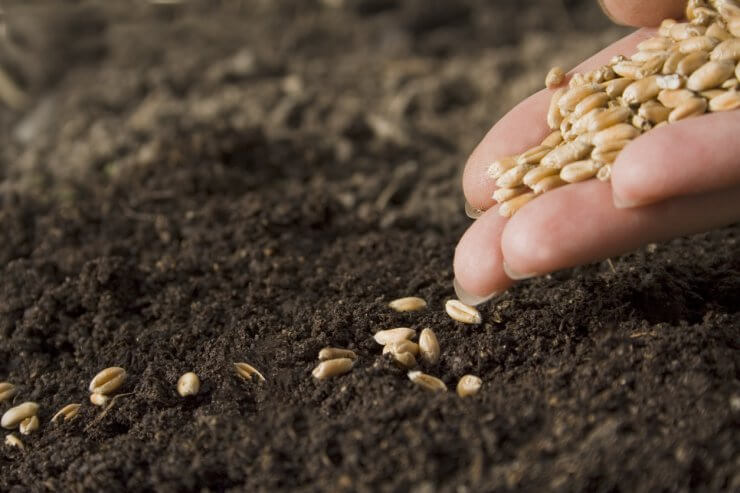
Sowing wheat seeds
Wheat is typically sown directly into the garden in the spring or fall, depending on the type of wheat you’re planting. Spring wheat varieties are planted as soon as the ground is workable; the wheat will be ready to harvest in the summer. Winter wheat is sown in the fall, two or three weeks before the first frost is expected. Winter wheat lives through the winter and is harvested the following summer or fall.
If you are planting spring wheat, it’s best if you turn over and prepare the soil the previous fall. Then you can plant wheat seed as soon as the ground can be worked. If you weren’t able to do that, or you are planting winter wheat, dig up and prepare your soil, then water the area, making sure the soil is damp, but not so wet that puddles form. For a small plot, you can simply broadcast the seeds over the planting area by hand, aiming for approximately one seed (known as a wheat berry) for every square inch. For larger plots, you’ll get more even distribution—with fewer bare patches in which weeds can take hold—if you use a seed spreader. You can borrow a seed spreader from a fellow gardener or rent one.
After the seed is down, rake the area again and smooth out the soil to cover the seeds about an inch deep into the soil. This will help prevent the birds from eating them, but some gardeners cover the area loosely with straw for extra protection. If birds and rodents are persistent, cover the area with netting.
Wheat berries will sprout in about a week. Remove the straw covering, if you used it, and keep the seedlings stress-free by making sure the soil doesn’t dry out and by religiously removing weeds. Once the wheat plants start to mature, their close planting will help prevent weeds from growing.
Have you tried growing wheat from seeds? Which method of planting do you prefer—and why? Please share your experiences with us.


 Previous
Previous

